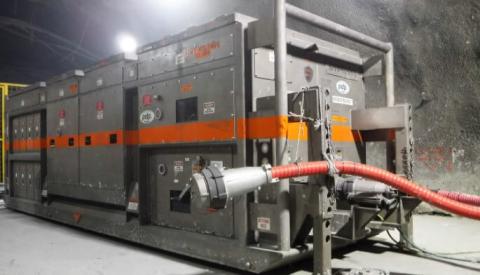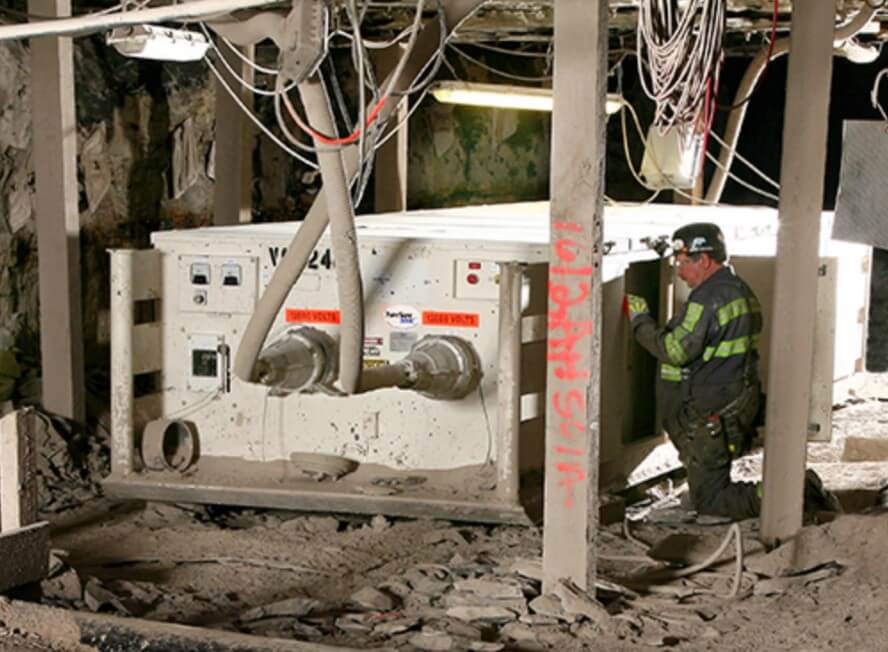
In the realm of industrial and mining operations, managing power distribution efficiently and safely is crucial. One of the most advanced solutions to meet these demands is the use of E-House substations. This innovative technology is revolutionizing how power needs are addressed, offering numerous advantages over traditional substations. In this blog post, we will delve into what E-House substations are, their key benefits, and why they are becoming the preferred choice for many industrial applications.
What Are E-House Substations?
E-House substations, or Electrical House substations, are prefabricated, modular buildings that house electrical equipment and control systems necessary for power distribution. These units are designed to be highly flexible and can be customized to fit specific needs. Essentially, an E-House is a compact, self-contained substation that includes all the necessary components for power management, such as switchgear, transformers, and control systems.
These substations are built off-site in a controlled environment, which allows for quicker assembly and reduced on-site construction time. They are transported as a complete unit or in modular sections to the installation site, where they are quickly assembled and put into operation.

GET IN TOUCH
In a hurry? Call us at 276-285-3841
The Components of E-House Substations
An E-House substation typically includes several key components:
- Switchgear: This includes circuit breakers and switches that control and protect the electrical circuits within the substation. Switchgear ensures the safe and reliable distribution of electrical power.
- Transformers: Transformers are used to step up or step down the voltage levels as required. They are critical for adjusting power to the appropriate levels for distribution.
- Control Systems: Modern E-Houses are equipped with sophisticated control systems that allow for monitoring, automation, and remote management of the electrical equipment.
- Protection Systems: These systems ensure that the electrical equipment is protected from faults and other issues. This includes protective relays, fuses, and other safety mechanisms.
- Cooling Systems: To maintain optimal operating conditions, E-Houses often include cooling systems to manage the heat generated by electrical equipment.
- HVAC Systems: Heating, ventilation, and air conditioning systems are essential for maintaining a stable environment within the E-House.
Advantages of E-House Substations
E-House substations offer several significant advantages over traditional substation designs:
1. Speed of Deployment
One of the most notable benefits of E-House substations is the speed with which they can be deployed. Because they are prefabricated, they can be quickly assembled on-site, reducing construction time and minimizing disruptions to ongoing operations. This rapid deployment is especially beneficial in industries where time is critical, such as mining and energy production.
2. Reduced Construction Costs
The off-site construction of E-Houses significantly reduces the costs associated with building a traditional substation. Since the E-House is manufactured in a controlled environment, there are fewer unexpected expenses and delays. Additionally, the modular nature of E-Houses allows for efficient use of materials and labor, further lowering costs.
3. Flexibility and Scalability
E-House substations are highly flexible and can be easily customized to meet specific requirements. They can be scaled up or down depending on the power needs of the operation. This scalability makes them an ideal solution for projects with varying power demands or for expanding operations.
4. Enhanced Safety and Reliability
Safety is a top priority in any industrial setting, and E-House substations are designed with this in mind. The modular design allows for the integration of advanced safety features, such as fire suppression systems and explosion-proof enclosures. The controlled environment in which the E-House is built also contributes to its reliability and durability.
5. Improved Environmental Impact
E-House substations can be designed with eco-friendly features, such as energy-efficient cooling systems and low-emission equipment. Additionally, the modular nature of the E-House allows for easier integration of renewable energy sources, contributing to a more sustainable energy infrastructure.
6. Reduced On-Site Footprint
Traditional substations often require a significant amount of space for construction and operation. In contrast, E-House substations have a compact design that minimizes the on-site footprint. This is particularly advantageous in areas with limited space or where environmental concerns are a factor.
7. Enhanced Operational Efficiency
With integrated control and monitoring systems, E-House substations allow for real-time management of electrical distribution. This enhances operational efficiency and enables quick response to any issues that may arise. Remote monitoring capabilities further improve operational management by providing instant access to performance data and alerts.
Applications of E-House Substations
E-House substations are versatile and can be used in a wide range of applications. Some common areas where they are employed include:
1. Mining Operations
In mining operations, E-House substations provide a reliable and efficient means of managing power distribution. The harsh environmental conditions and remote locations of many mines make the quick deployment and robust design of E-Houses particularly advantageous.
2. Oil and Gas Industry
The oil and gas industry often operates in challenging environments where traditional substations may not be practical. E-House substations offer a compact and flexible solution for managing power needs in offshore rigs, refineries, and exploration sites.
3. Renewable Energy Projects
As the demand for renewable energy sources grows, E-House substations are increasingly being used to support solar farms, wind farms, and other green energy projects. Their adaptability and scalability make them a perfect fit for the dynamic needs of renewable energy systems.
4. Industrial Facilities
Large industrial facilities with significant power requirements benefit from the efficiency and reliability of E-House substations. They are used to manage power distribution within manufacturing plants, processing facilities, and other large-scale industrial operations.

GET IN TOUCH
In a hurry? Call us at 276-285-3841
Case Studies: Successful Implementations of E-House Substations
To illustrate the impact of E-House substations, let’s look at a few case studies where they have been successfully implemented:
1. Mining Site in Australia
A major mining company in Australia required a quick and reliable power solution for a new site. Traditional substation construction would have taken months, causing potential delays in operations. By opting for an E-House substation, the company was able to deploy the necessary power infrastructure within weeks, ensuring that the site began operations on schedule.
2. Oil Rig in the North Sea
An offshore oil rig in the North Sea faced challenges with maintaining power distribution due to the harsh weather conditions and remote location. The installation of an E-House substation provided a robust and weather-resistant solution, improving power reliability and operational efficiency on the rig.
3. Solar Farm Expansion in California
A large solar farm in California needed to expand its power management capabilities to accommodate increased energy production. The flexibility and scalability of an E-House substation allowed the farm to seamlessly integrate additional equipment and manage power distribution more effectively, supporting the farm’s growth and sustainability goals.
Future Trends in E-House Substations
As technology continues to advance, the design and functionality of E-House substations are expected to evolve. Some trends to watch for include:
- Integration with Smart Grid Technology: E-House substations will increasingly incorporate smart grid technology, allowing for enhanced monitoring, control, and automation of power distribution.
- Advanced Energy Storage Solutions: The integration of energy storage systems, such as batteries, will become more common in E-House substations, providing greater flexibility and reliability in power management.
- Increased Use of Renewable Energy: E-House substations will play a crucial role in integrating renewable energy sources into the power grid, supporting the transition to a more sustainable energy infrastructure.
- Enhanced Remote Management: Advances in communication technology will enable even more sophisticated remote management and control of E-House substations, improving operational efficiency and response times.
Conclusion
E-House substations represent a significant advancement in the field of power distribution. Their modular design, speed of deployment, and numerous benefits make them a modern solution for addressing power needs across various industries. As technology continues to evolve, E-House substations are poised to play an even greater role in shaping the future of energy management. Becker Mining USA is proud to be at the forefront of this innovation, providing cutting-edge solutions to meet the ever-changing demands of power distribution.
Products We Offer:
- Explosion Proof Equipment
- Transformers
- Arc Guard
- Longwall Electrical Systems
- Capacitor Trip Devices
- Electrical Equipments like capacitor banks, switch houses, junctions, and splice boxes.
Power up your productivity with Becker Mining's ground fault relays - the reliable and efficient solution for all your power distribution needs. Call us today!